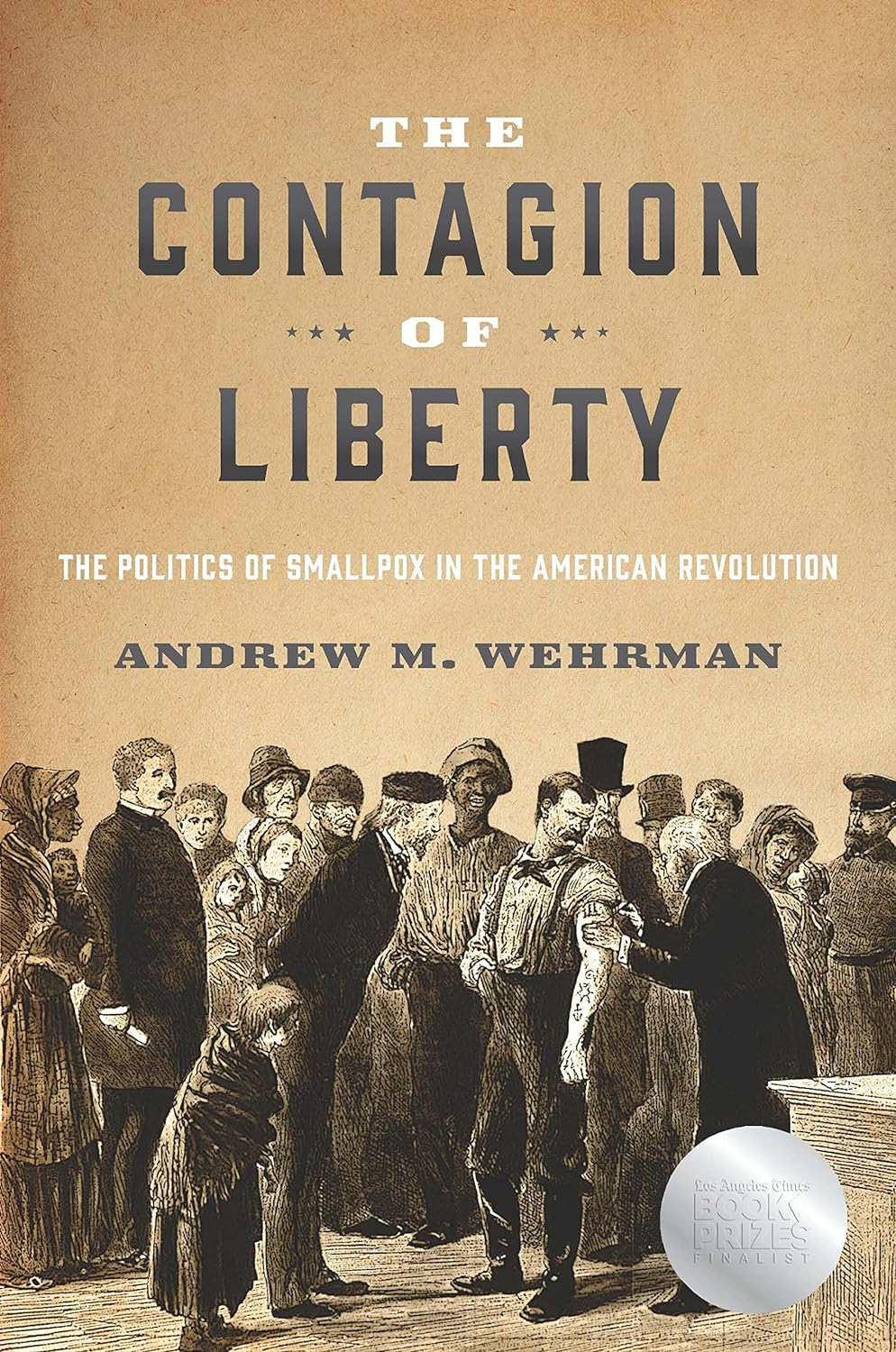In November 1736, Francis Franklin—Benjamin Franklin’s beloved 4-year-old son—fell ill with smallpox and soon died. Philadelphia at the time was in the midst of an epidemic, and the Franklins’ painful ordeal was one of an estimated 100,000 similar tragedies that played out in 18th-century America. In “The Contagion of Liberty,” Andrew Wehrman weaves together dozens of individual stories and their layered historical contexts to provide a fascinating account of smallpox in America, from colonial times through the early republic.
Smallpox was one of the 18th century’s most feared diseases, affecting cities around the world and ravaging early American urban centers in recurring waves. Those who were infected developed high fevers, body aches and painful pocks filled, Mr. Wehrman writes, “with a viscous milk-white pustular fluid that could soak clothing and bedsheets with infectious material.” Forming beneath the skin, the pocks could number in the thousands, often concentrating on the face, hands and feet, inflaming nerve endings before erupting through the skin’s surface. The disease, highly contagious before and after the onset of visible signs of infection, was also deadly. Mortality rates ranged from 10% to 30%.
How best to control the disease was an urgent question. If first-level defenses—targeted quarantines and mobility restrictions—didn’t work, entire towns and cities were locked down, disrupting daily life and devastating commerce. It was known that smallpox survivors gained lifelong immunity; in 17th-century Europe, a procedure of inoculation had emerged that involved taking a small amount of pus from an infected person and injecting it into a healthy person’s arm. If successful, the procedure would produce a mild case of the disease from which the patient would survive, immunity intact. But things could and did go wrong. The freshly inoculated were themselves contagious and posed a grave danger to the community. Some patients died. Was inoculation advisable? Was it a private affair? A civic responsibility? Hot-tempered debates raged in town meetings and newspapers. Some considered inoculation insufficiently justified by the scientific evidence. Others believed that surviving smallpox was best left to God’s will.
Many assumed that Franklin’s son had died from inoculation. Days before Christmas 1736, Franklin—an inoculation supporter—explained in a short note, printed at the foot of his own Pennsylvania Gazette’s last page, that Francis’s death was not evidence against inoculation. The truth was that the boy had contracted the disease naturally. Franklin had intended to have his son inoculated but had not done so in time. Later, in his autobiography, he wrote: “I long regretted bitterly, and still regret that I had not given [smallpox] to him by inoculation.”
